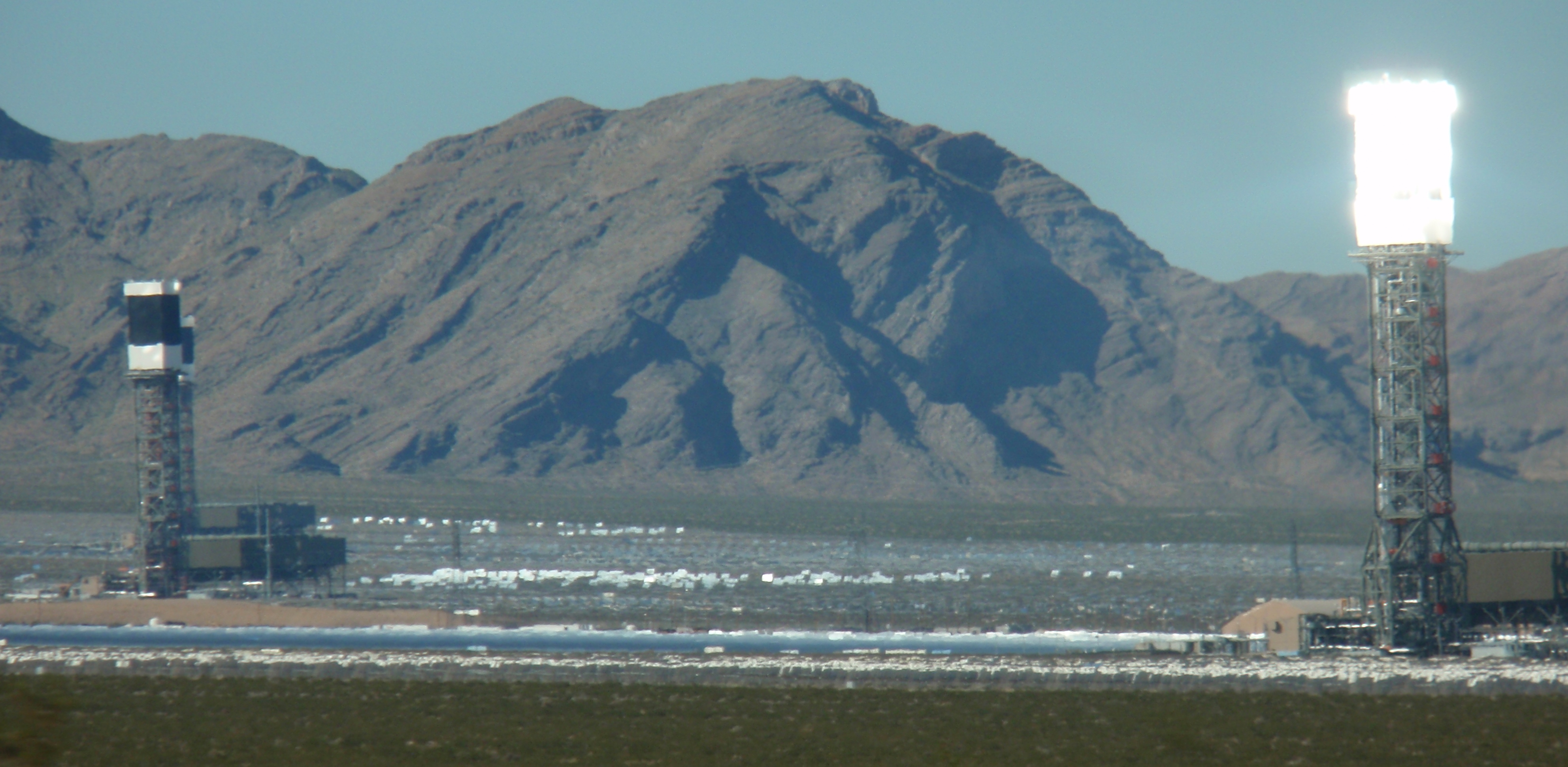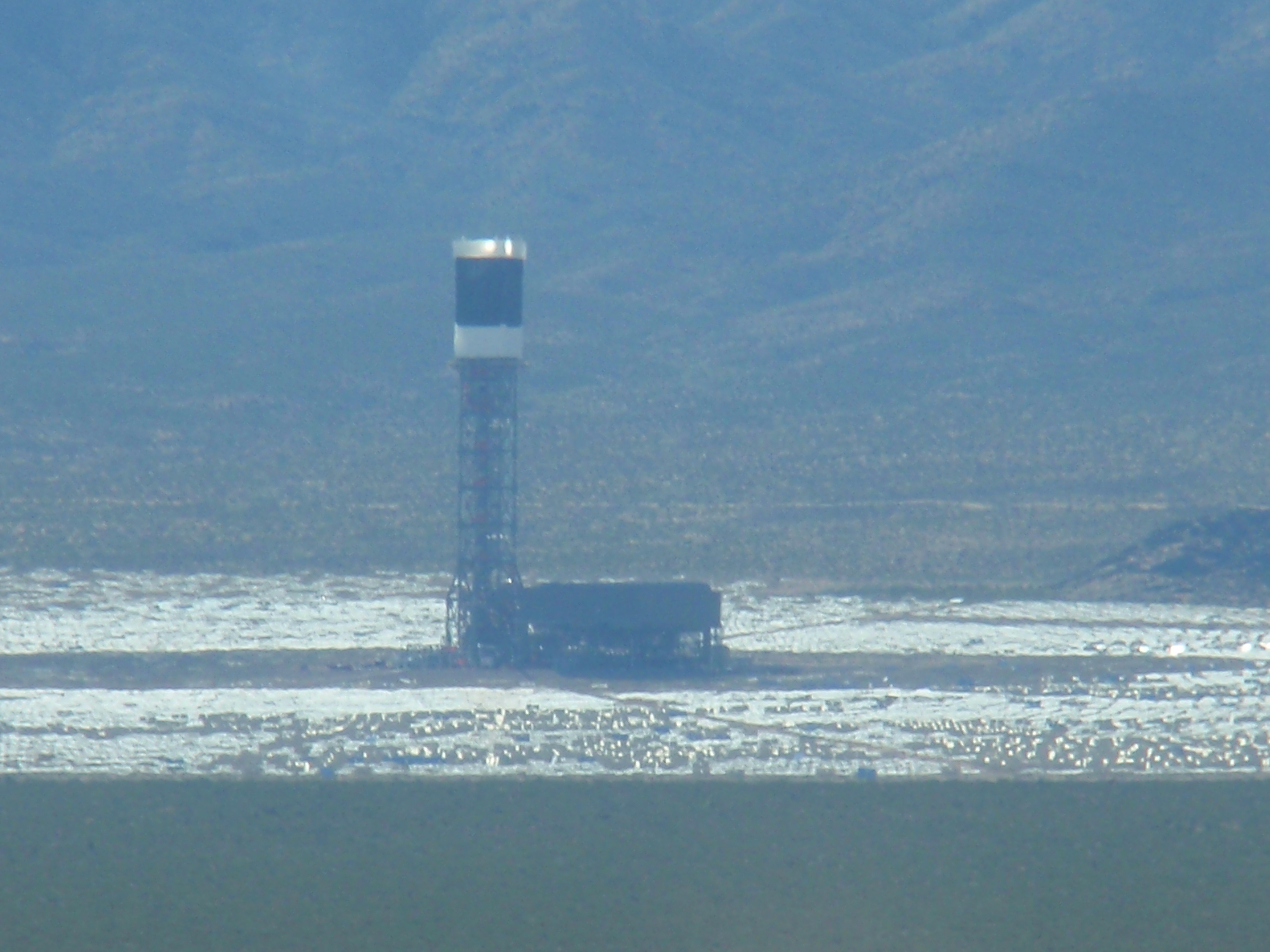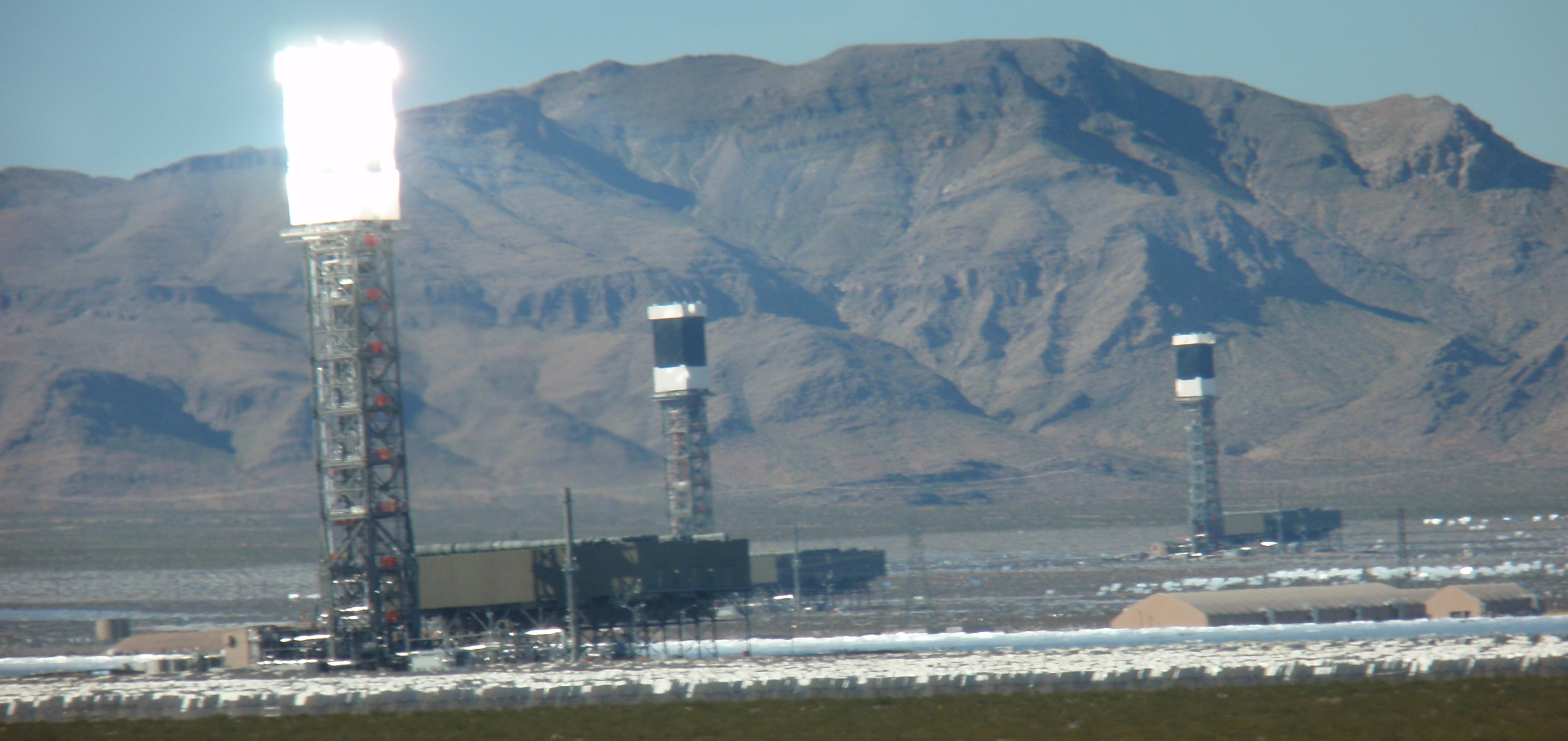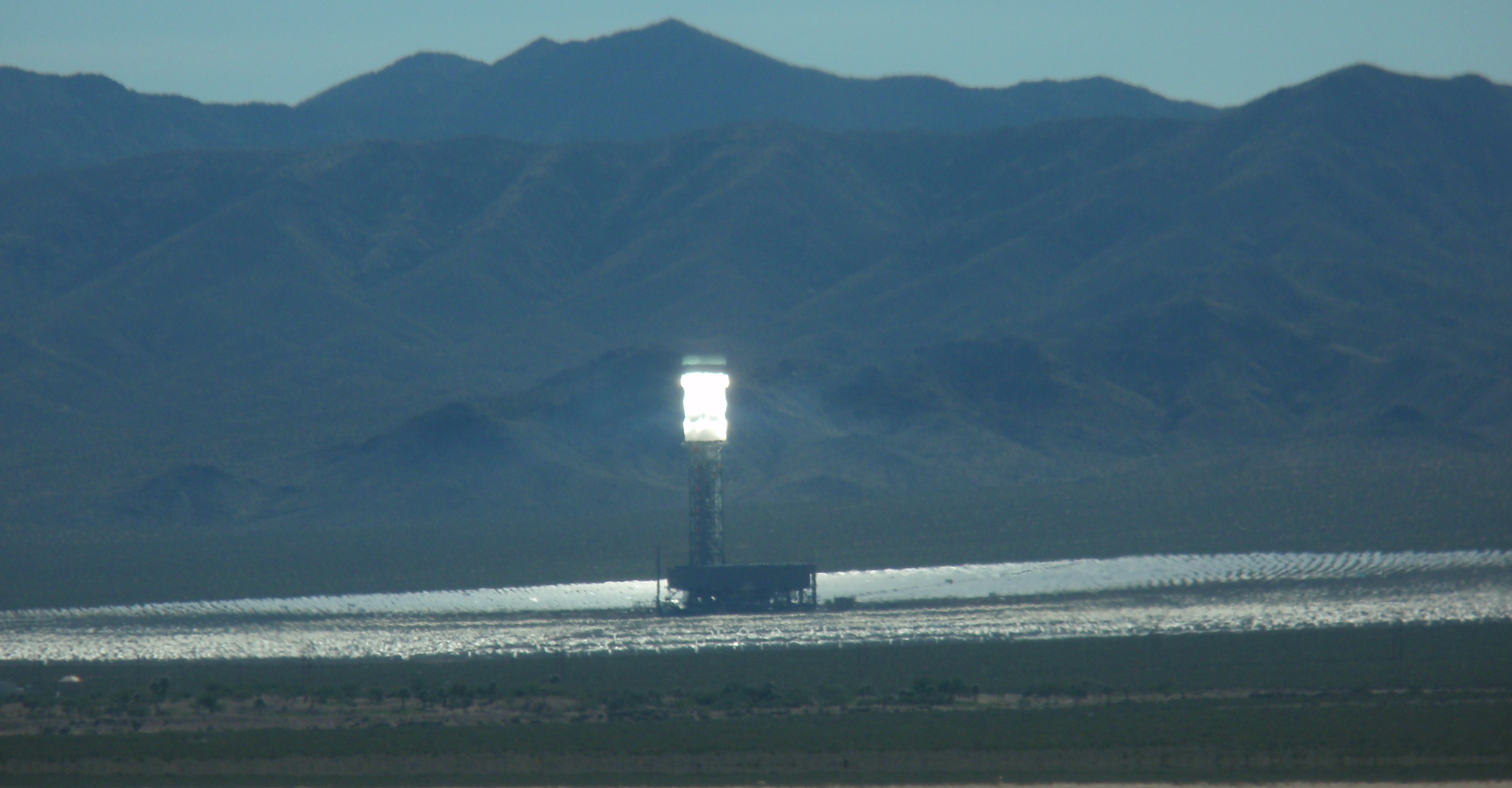The Ivanpah thermal solar plant has been operating all three towers in the facility since the first of the year. That according to the San Bernardino Sun on 2/3/14– World’s largest solar thermal plant comes on line near state line. They hosted a grand opening on 2/13/14, as mentioned here.
All three towers are in operation. At peak point of output, while the sun is up, when there aren’t any clouds in the sky, and when the towers are actually working (see comment later in this post), the three towers will be able to produce a maximum of 392MW. Of this, 259 MW will go to Pacific Gas and Electric in the bay area and 133 MW (from unit 3) will go to SCE here in Southern California, according to the article.
On the other hand, Chris Clarke reports on 1/30 that Ivanpah Solar Project Quietly Goes Online — Or Does It?
Continue reading “Largest solar plant comes on line, sort of – solar #10”





